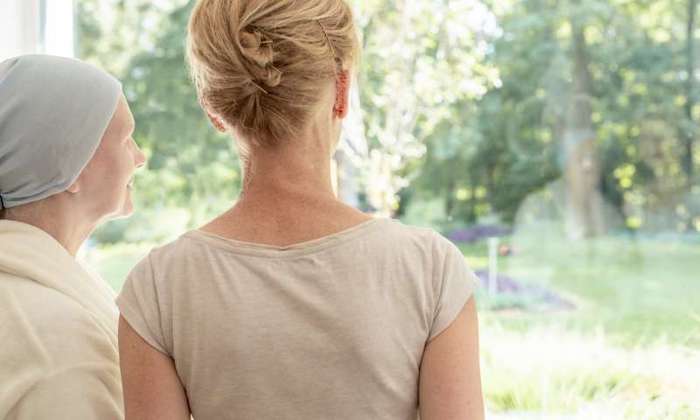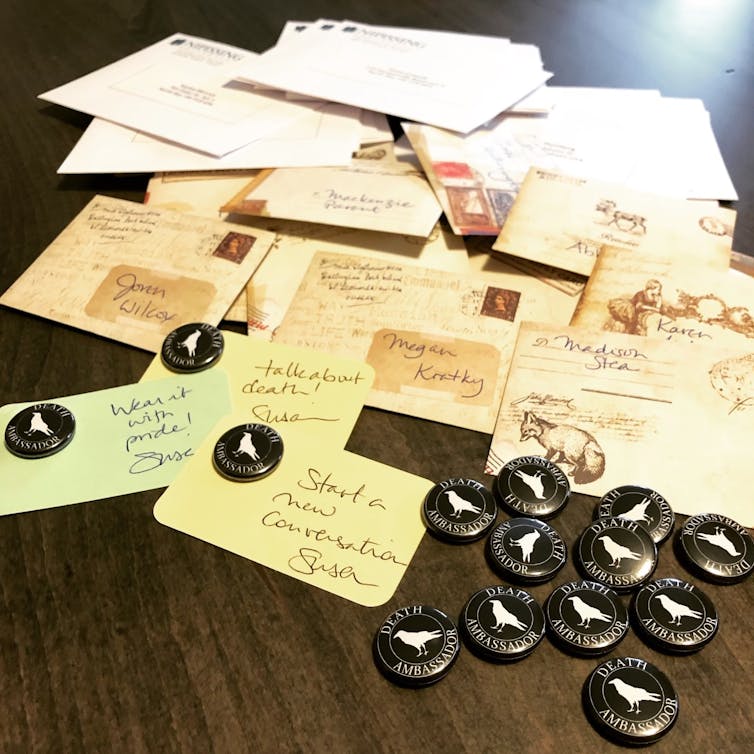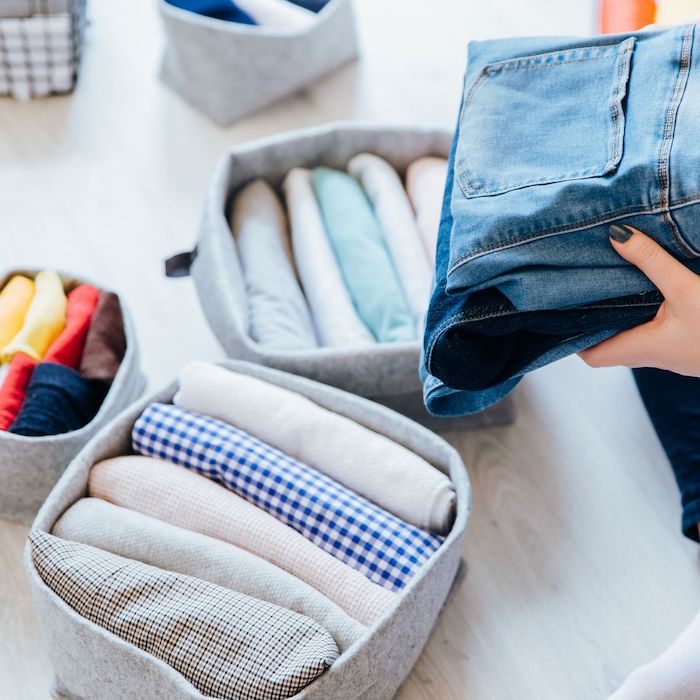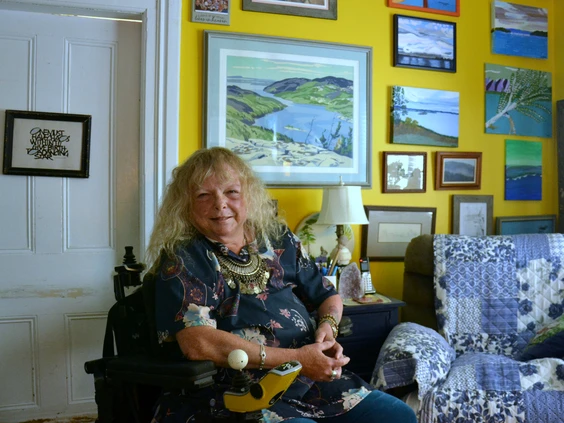— We Talked to 3 Death Doulas

As Halloween, Day of the Dead, and All Souls and Saints Day have passed, we reflect on death and the afterlife. In fact, it’s all consuming. It’s impossible to not think of our loved ones we have lost or those we may lose when visiting grave sites or setting up an altar with candles.
By Penny Min
Whether religion comes into the conversation or not, death is a complex topic to discuss. The dying process is a mystery for most people, and shielding away from “the end” is an uncomfortable reality that many aren’t ready to face. Oftentimes, most people ignore it alltogether.
Avoidance, however, doesn’t always work when it comes to the inevitable — preparing for one’s departure from the world. And sometimes, people just need a little help, guidance, and comfort to ease into this next transition.
That’s why having a death doula assist during the latter stages of life is increasingly becoming a popular business and option for those heading toward the light.
A “doula” is a term commonly employed to describe someone who supports a pregnant woman during childbirth. The name is derived from the Greek word “doulđ,” which means “slave or female servant.” More recently, the definition of a doula has been expanded beyond the introduction to life and includes someone who provides support to those who are nearing the end of their lives.
What does a death doula do?
The tasks performed by death doulas can change depending on the needs of the person they are currently assisting. A death doula may concentrate on performing menial duties so that others who are close to the dying person can concentrate on spending meaningful time with them. They may assist with funeral rites and ceremonies, such as ensuring that the proper cultural or religious customs are observed during the dying process and that the deceased’s body is appropriately handled after death.
Listening to the dying person and others close to them while providing nonjudgmental emotional and spiritual support can be a significant portion of the death doula’s job description.
To learn more about this compassionate role, we asked three death doulas about their difficult but rewarding profession.
Interview questions have been edited for length.
Alysha Suryah, Baltimore

Q: What kind of training goes into being a death doula?
A: While end-of-life doulas have been around for years, the process for entering this space as a professional is somewhat unregulated. There are a plethora of opportunities to get out in the community to receive training in specialized topics, like rituals and communication, as well as the business side of this role; however, certifications are not required to provide this level of care to clients or even within your community — there are even opportunities to be a volunteer doula at hospice centers or other related organizations.
The only thing needed to be a doula is a willingness to provide compassionate care and a deep commitment to supporting individuals and their families during this potentially life-changing journey. It’s really a role rooted in humanity, and while formal training and certifications can certainly enhance your skills, the essence of being a death doula is the unwavering dedication to being there for others when they need it most.
Q: What are some of the challenges of the job?
A: One of the primary challenges of this role is the emotional toll it can take, even if one is vigilant about protecting their emotional well-being. Death is an intensely personal experience for everyone, and as an end-of-life doula, you have the potential to build deep, meaningful relationships with the individuals you serve. Bearing witness to their grief, pain, and loss, as well as the grief of their families following their passing, can be emotionally taxing at times. Sometimes, the relationships formed with clients are so close that you find yourself sharing in their sense of loss. It necessitates practitioners to have a considerable amount of mental fortitude to provide unwaveringly compassionate care consistently.
In addition to the emotional challenges, end-of-life doulas also encounter practical challenges. Effective communication, including facilitating difficult conversations, is a key aspect of the role. Irregular hours, often involving evenings and weekends, demand flexibility. Additionally, managing multiple clients simultaneously can increase the risk of burnout, emphasizing the need for self-care and support. Balancing the emotional demands and the practical challenges of the role, end-of-life doulas exemplify resilience in their commitment to providing support while navigating the complexities of end-of-life journeys.
Q: Is a death doula brought into hospice, or is it home care?
A: The professional role of a death doula is remarkably diverse, shaped by an individual’s strengths, experiences, interests, and the specific needs of their community. Death doulas can be found in both hospice and home care settings, and their responsibilities closely align.
In hospice settings, death doulas collaborate closely with hospice teams to provide comprehensive support to patients and their families. Their mission typically involves offering emotional support and guidance, contributing to legacy projects, and assisting individuals throughout the end-of-life journey. Their role seamlessly integrates within the hospice care framework. Conversely, some death doulas choose to operate within the context of home care. In this capacity, they provide support to individuals who have decided to receive end-of-life care in the comfort of their homes. Within this environment, death doulas can have a higher degree of flexibility compared to the structured relationships found in hospice settings. Their services encompass companionship, emotional and/or practical support, as well as guidance and education on end-of-life decisions. They also continue to provide support to clients’ families, guiding them through the dying process in a familiar environment.
Catherine Durkin Robinson, Chicago

Q: What led you to become a death doula?
A: I’ve been doing death doula work for a long time. Raised Irish Catholic, I was at my first “Last Rites” when I was five, and thought everyone was raised to believe that death is a natural part of life. I was much older when I realized that most of my friends were shielded from death and quite frightened by it. So I’d been their “death buddy” for years. I was also a longtime volunteer for two hospice organizations. It was around the time of the pandemic when I realized my 30-year career as a political organizer was coming to an end. I wanted to continue advocating for people outside the political system (it’s gotten quite toxic out there.) Someone said that I was already doing this work, so I went back to school (University of Vermont) and opened up my practice.
Q: What are some of the biggest challenges in your line of work?
A: I think one of my biggest challenges is helping people to see death in a different light. We can be awed by its mystery rather than frightened by it. Another challenge is helping people understand that plant medicine, or psychedelics, can reduce anxiety and fear around end-of-life. People are afraid of that idea, too. So, I’m pioneering in this space and need to remember that and be patient as I go.
Q: I’m interested in your experience in the polyamorous space. Can you discuss this?
A: Yes, there are lots of challenges about the end of life for different families. This is especially true for non-traditional families, like polyamorous or anyone on the LGBTQ+ spectrum. As someone with training and lived experience in this realm, I’m happy to advocate for families and help healthcare providers to better support them when needed.
Laura Lyster-Mensh, Washington D.C.

Q: How long have you been assisting others as a death doula?
A: I have always been interested in the processes of birth and death. At my stage of life, there is more death, and I wanted to explore how to be a better caregiver, supporter, and mourner.
I started my training in late 2021 and have been volunteering with dying people and doing death awareness work since early 2022.
Q: How has becoming a death doula changed your perspective on death and dying?
A: I’m less afraid of dying. I am able now to separate dying from death, and that is quite helpful.
Q: Can you tell me about the death positivity programming at the Congressional Cemetery, where you are a death doula?
A: Congressional Cemetery is taking a bold and active stance on this programming. Despite a very busy calendar with so many activities going on, they make space for these special events and gatherings. It’s innovative, and the community of death-positive participants is growing and supporting one another. It’s an honor to be facilitating these programs.
People stop me, often, when I’m walking around the cemetery and say, “Aren’t you the death doula?” These are the start of some of the most interesting and enriching conversations I’ve ever had. It is amazing how much people want to talk but don’t know where to start.
- Professional Care Management. End-of-Life Doulas.
Complete Article ↪HERE↩!







